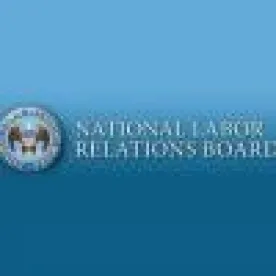In Hy-Brand Industrial Contractors Ltd., 365 No. 156 (Dec. 14, 2017), the National Labor Relations Board overturned its standard for determining joint employer status under the National Labor Relations Act established in Browning-Ferris Industries of California, Inc., 362 NLRB No. 186 (Aug. 27, 2015). Hy-Brand will be applied retroactively to any matter currently pending before the Board, as well as to all new matters.
Returning to the former joint employer standard (and reviving precedent overturned by Browning-Ferris), joint employer status will be found only where two or more entities actually “share or codetermine those matters governing the essential terms and conditions of employment,” such as hiring, firing, discipline, supervision, and direction, and where the kind or degree of “control” is direct and immediate, and not limited or routine in nature. See Airborne Express, 338 NLRB 597 (2002); TLI, Inc., 271 NLRB 798 (1984); Laerco Transportation, 269 NLRB 324 (1984).
The 34-page decision largely echoes the arguments raised in the 30-page Browning-Ferris dissent, penned by former Chairman (then-Member) Philip Miscimarra and former Member Harry I. Johnson, III. The dissent in Hy-Brand highlights the growing frustration of the Board’s two remaining Democratic Members, Mark Gaston Pearce and Lauren McFerran.
“Five Major Problems”
Browning-Ferris, one of the NLRB’s most controversial decisions in decades, transformed the prior joint employer standard, which had been in effect for more than 30 years (without, as the dissenters there noted, “a single note of judicial criticism”), into a two-part test. The Browning-Ferris test considered: (1) whether a common law employment relationship exists; and (2) whether the potential joint employer “possesses sufficient control over employees’ essential terms and conditions of employment to permit meaningful bargaining.” The critical distinction under the Browning-Ferris standard was that the level of “control” needed to establish liability could be direct, indirect, or even a reserved right to control, regardless of whether that right is ever exercised.
Employers across every industry felt the impact of Browning-Ferris. Employers faced the potential for unprecedented new joint bargaining obligations, liability for unfair labor practices and breaches of collective bargaining agreements, and exposure to economic protest activity, including secondary strikes, boycotts, and picketing.
The Board majority identified the following “five major problems” with the Browning-Ferris decision that support reinstating the former joint employer standard:
- The Browning-Ferris standard exceeds the limits of the Board’s statutory authority. In making the change to adapt Board law to reflect changes to the national economy, the Board did not operate within the limits of traditional common law principles, but rather relied on theories of “economic realities” and “statutory purpose” that extended the definitions of “employee” and “employer” well beyond the common law limits that Congress and the U.S. Supreme Court have stated must apply.
- The Browning-Ferris rationale for changing the NLRA’s definition of “employer” relied in substantial part on the notion that present conditions are unique to our modern economy. However, many forms of subcontracting, outsourcing, and temporary or contingent employment have existed in this country for more than 200 years.
- The Board is bound by the common law of agency, which requires evidence of direct control. The common law standard, as codified by the Act, requires direct control over one or more essential terms and conditions of employment to constitute an entity the joint employer of another entity’s employees, and so the change made in Browning-Ferris is solely within the province of Congress, not the Board. Under the common law, evidence of indirect control or contractually-reserved authority is probative only to the extent that it supplements and reinforces evidence of direct control.
- The Browning-Ferris standard is unable to furnish predictable results, and is likely to destabilize collective bargaining. Browning-Ferris replaced a longstanding test with a vague and ill-defined one that would have resulted in the imposition of unprecedented bargaining obligations on multiple entities in a wide variety of business relationships, based solely on a never-exercised right to exercise “indirect” control. It also would have resulted in substantial burdens, expense, and liability for innumerable parties, with consequent delay, risk, and litigation expense.
- Addressing bargaining inequality (one of the Browning-Ferris majority’s reasons for changing the joint employer standard) is not within the purview of the NLRB. Such inequality has been a fixture of our economy. There are contractually more powerful business entities and less powerful business entities, and all pursue their own interests. The Board would need a clear congressional command before undertaking an attempt to reshape this aspect of economic reality.
Dissent
Members Pearce and McFerran issued a scathing dissent. They chastised the majority for a “willful misunderstanding of the joint-employer standard adopted in [Browning-Ferris]” and for not soliciting public comments before overturning Board precedent.
Takeaways for Employers
Despite the Board’s return to its prior joint employer standard, employers are not yet out of the woods. The Equal Employment Opportunity Commission, the Department of Labor, other agencies, and some courts have adopted versions of the Browning-Ferris standard. They may not back away from those versions.
While Hy-Brand may blunt the drive to expand the joint employer standard, employers could be found to be joint employers in contexts outside the Act, even if they would not be found joint employers under Hy-Brand.
The NLRB changed the “test” for finding two or more employers to be joint employers — it did not eliminate the possibility that employers can be found to be joint employers. Therefore, companies, especially those in high-risk industries (e.g., franchisor/franchisee and temporary services), still should be careful to consult with counsel and structure their relationships to avoid a joint employer finding.
Finally, Browning-Ferris has been appealed to the U.S. Court of Appeals for the D.C. Circuit. While it is unlikely that the Court will issue a decision on the merits (it may remand the case to the NLRB with instructions to apply Hy-Brand to the facts of the case or determine the case is arguably rendered moot by Hy-Brand), Congress will continue legislative efforts to amend the NLRA to prevent the NLRB from reversing course the next time a Democratic leader is in the White House.







 />i
/>i

